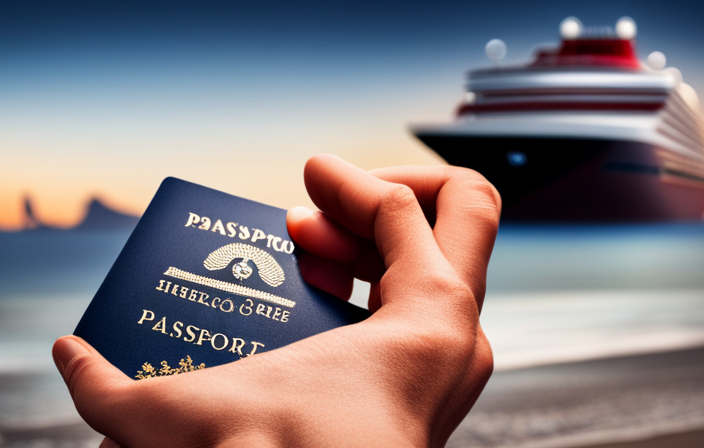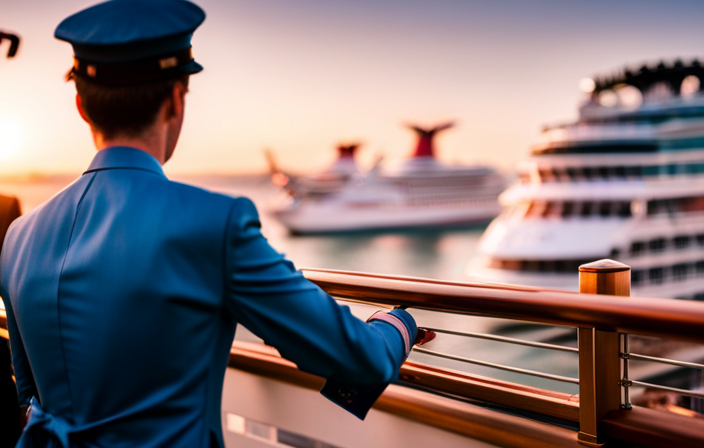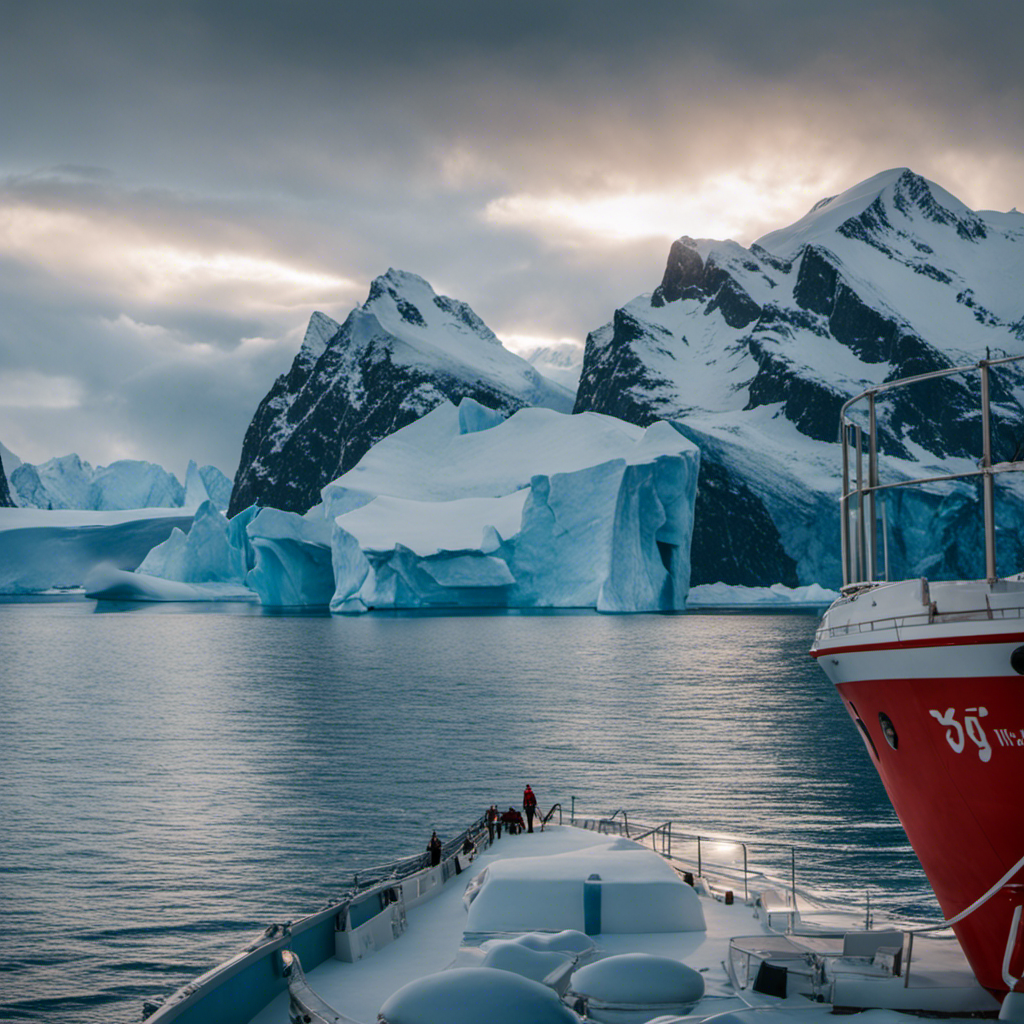Cruise Lines
How Many People Go Missing On Cruise Ships
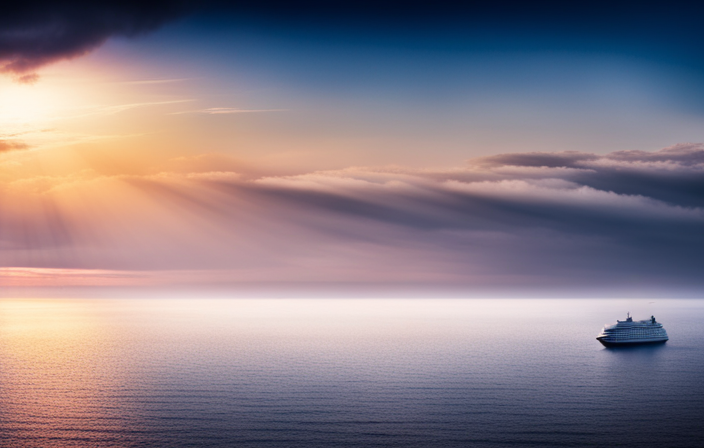
As a passionate cruiser, I am fascinated by the investigation of people disappearing on cruise ships. This important issue is often overlooked due to the attractive and luxurious nature of these floating resorts. However, beyond the glitz and glamor, there is a hidden truth where many individuals vanish during their sea voyages.
This article aims to shed light on this issue by examining safety measures and regulations, high profile missing persons cases, and the role played by crew members and passengers. Additionally, we will explore the legal and jurisdictional challenges faced in investigating these disappearances and compare them to other forms of travel.
We’ll also discuss the support and resources available for victims’ families and explore steps towards prevention and awareness. Ultimately, our goal is to strike a balance between enjoying the thrill of cruise ship travel while ensuring everyone’s safety on board.
Key Takeaways
- The number of missing persons on cruise ships is relatively low compared to other forms of transportation.
- Cruise lines prioritize passenger safety and have comprehensive safety training programs for crew members.
- High-profile missing persons cases on cruise ships have received extensive media coverage and raised safety concerns.
- Collaboration and cooperation among countries are crucial in addressing missing persons cases on cruise ships due to jurisdictional challenges in international waters.
The Reality of Missing Persons on Cruise Ships
Let’s dive into the startling truth about how many people actually go missing on cruise ships.
It is indeed a concerning issue, but it’s important to understand that the numbers are relatively low compared to other forms of transportation. Cruise lines prioritize passenger safety and have implemented various safety precautions to minimize incidents.
When a person goes missing, an investigation process takes place immediately. The crew works closely with law enforcement agencies, utilizing surveillance footage, conducting interviews, and examining onboard records to gather information and piece together the events leading up to the disappearance.
It is crucial for cruise ships to maintain a transparent and efficient investigation process in order to ensure passenger confidence and satisfaction.
Now let’s move on to explore the stringent safety measures and regulations in place within the industry.
Safety Measures and Regulations
Ensure your safety and peace of mind while onboard by familiarizing yourself with the extensive safety measures and regulations in place. Cruise ships prioritize passenger safety through comprehensive safety training programs for crew members. These programs ensure that staff are equipped with the necessary skills to handle emergency situations effectively.
Additionally, cruise ships have strict emergency protocols in place, including mandatory lifeboat drills and evacuation procedures. The crew undergoes regular training sessions to maintain their readiness in case of any unforeseen events. Safety equipment such as life jackets, fire extinguishers, and alarm systems are strategically placed throughout the ship to provide easy access in case of emergencies.
By adhering to these protocols and being aware of the onboard safety measures, passengers can feel confident that their well-being is a top priority.
Now let’s delve into high-profile examples of missing persons cases without skipping a beat.
Missing Persons Cases: High Profile Examples
Immerse yourself in the intriguing world of high-profile missing persons cases, where mysterious disappearances have captivated the public’s imagination and left authorities puzzled. These missing persons investigations often receive extensive media coverage, as the public becomes engrossed in the search for answers.
One such case is that of Rebecca Coriam, a crew member who vanished from a Disney cruise ship in 2011. Despite thorough investigations and media attention, her disappearance remains unsolved.
Another high-profile example is George Smith IV, who disappeared during his honeymoon aboard a Royal Caribbean cruise ship in 2005. The case gained significant media coverage and highlighted concerns about safety on cruise ships.
These notable cases underscore the importance of understanding the complexities involved in missing persons investigations and analyzing media coverage to shed light on these mysteries.
As we delve into the next section about ‘the role of crew members and passengers,’ we will explore how their actions can impact these cases without taking any missteps.
The Role of Crew Members and Passengers
Crew members and passengers play a crucial role in the captivating world of missing persons cases on cruise ships, adding intrigue and complexity to these intriguing mysteries.
The role of crew training is paramount in ensuring the safety and security of everyone on board. Trained crew members are responsible for conducting regular checks, maintaining surveillance systems, and responding quickly to any suspicious or concerning situations.
Passengers also have their own set of responsibilities when it comes to preventing incidents and assisting in investigations. They are encouraged to report any unusual behavior or concerns to the crew immediately. Additionally, they should familiarize themselves with emergency procedures and participate in safety drills.
Overall, the collaboration between well-trained crew members and vigilant passengers can greatly enhance the chances of resolving missing persons cases on cruise ships. These combined efforts contribute to a comprehensive approach that addresses both prevention and response strategies.
Moving into the next section about ‘legal and jurisdictional challenges’, we delve deeper into understanding how these complexities impact missing persons investigations at sea.
Legal and Jurisdictional Challenges
When it comes to legal and jurisdictional challenges in cases of missing persons on cruise ships, there are several key points to consider.
First, the issue of international waters and maritime law can complicate investigations and determine which country has jurisdiction over the case.
Second, collaboration and cooperation among countries becomes crucial in order to effectively address these cases, as they often involve multiple jurisdictions.
Lastly, understanding the legal rights and recourse available for victims’ families is essential in providing them with support and justice during such challenging times.
International Waters and Maritime Law
You can’t ignore the fact that international waters and maritime law play a significant role in understanding the mysterious disappearances of individuals on cruise ships. The jurisdictional challenges faced when dealing with crimes or incidents that occur on a cruise ship in international waters can be complex. International cooperation and legal challenges arise due to the involvement of multiple countries, each with their own legal systems and jurisdictional boundaries.
To illustrate this complexity, consider the following table:
| Country | Jurisdiction | Legal Challenges |
|---|---|---|
| USA | Onboard | Crimes committed onboard a US-owned ship may fall under US jurisdiction, but enforcing laws can be challenging when ships are registered in other countries. |
| Bahamas | Flag State | Ships registered in the Bahamas follow Bahamian maritime law, but investigations may require cooperation from other countries involved. |
| Italy | Port State | When a crime occurs while docked at an Italian port, Italian authorities have jurisdiction over the incident and may need to collaborate with other nations. |
Understanding these challenges highlights the importance of collaboration and cooperation among countries to effectively address incidents occurring on cruise ships. This transition into discussing collaboration emphasizes the need for international efforts to ensure passenger safety and investigate disappearances at sea without delay or complications arising from legal obstacles.
Collaboration and Cooperation Among Countries
After discussing the complexities of international waters and maritime law, it is evident that collaboration and cooperation among countries are crucial in addressing the issue of missing persons on cruise ships.
When a person goes missing on a cruise, it often involves multiple jurisdictions and legal systems, making the investigation and search efforts even more challenging. Therefore, effective collaboration between different nations becomes essential in ensuring a thorough investigation and increasing the chances of locating missing individuals.
International cooperation enables sharing resources, information, and expertise among countries involved in these cases. By working together, governments can establish protocols for handling missing persons cases at sea and develop standardized procedures for investigations. This collaboration not only improves efficiency but also promotes transparency and accountability across borders.
With this foundation of international cooperation established, we can now delve into understanding the legal rights and recourse available to victims’ families when such unfortunate incidents occur.
Legal Rights and Recourse for Victims’ Families
Now let’s explore the legal rights and recourse available to families affected by these unfortunate incidents on cruise ships.
When a loved one goes missing on a cruise ship, families often seek legal compensation for their loss. Depending on the circumstances, families may be entitled to financial compensation from the cruise line or other parties involved.
It is important for families to consult with an attorney who specializes in maritime law to understand their rights and navigate the complex legal process.
In addition to legal compensation, families also need emotional support during this difficult time. Cruise lines should provide resources such as counseling services or support groups to help families cope with their grief.
Moving forward, it is crucial for the cruise industry to address these issues and ensure that proper measures are in place to prevent such incidents from occurring again.
The Impact on the Cruise Industry
When it comes to the impact on the cruise industry, there are several key points that need to be discussed.
First and foremost, reputation and public perception play a significant role in how the industry is perceived by potential customers.
Secondly, industry standards and accountability are crucial in ensuring the safety and satisfaction of passengers.
Lastly, efforts to improve safety measures should be a top priority for cruise companies in order to regain trust from the public.
Reputation and Public Perception
Despite the occasional disappearance of passengers at sea, cruise ships have managed to maintain a stellar reputation and are often seen as floating paradises. This is largely due to the cruise industry’s emphasis on reputation management and public relations.
Cruise lines invest significant resources in creating an image of luxury, safety, and fun for their passengers. They carefully curate their social media presence, showcasing breathtaking destinations, luxurious amenities, and happy guests having the time of their lives.
Cruise companies also prioritize guest satisfaction by providing excellent customer service throughout the voyage. Any negative incidents that occur onboard are swiftly addressed and resolved to prevent damage to their reputation. Additionally, they implement strict safety protocols and undergo regular inspections to ensure passenger safety.
However, it is crucial for the industry to continually improve industry standards and accountability. By enhancing transparency and implementing more rigorous safety measures, cruise lines can further bolster their reputation as safe and enjoyable vacation options.
Next up: Industry standards and accountability play a critical role in ensuring passenger safety on cruise ships.
Industry Standards and Accountability
With a strong focus on industry standards and accountability, cruise lines can ensure the safety and peace of mind of every passenger on board. To achieve this, they adhere to strict industry regulations that govern everything from ship design to crew training.
First, ships are required to follow international safety standards set by organizations like the International Maritime Organization (IMO).
Second, cruise lines implement rigorous training programs for their crew members, ensuring they are well-prepared to handle any emergency situation.
Third, there is a push for greater accountability and transparency within the industry. Cruise lines are now required to report incidents and maintain detailed records of safety measures taken onboard.
These efforts highlight the commitment of the cruise industry towards improving safety measures for all passengers on their ships.
Transitioning into the subsequent section about ‘efforts to improve safety measures,’ it is clear that cruise lines are continuously working towards enhancing passenger security without compromising their comfort and enjoyment.
Efforts to Improve Safety Measures
The cruise industry is making efforts to improve safety measures in various ways. One of these is by investing in and improving surveillance technology on board their ships. This includes installing high-quality cameras throughout the ship and implementing facial recognition software to enhance security measures.
In addition to this, cruise lines are prioritizing emergency response training for their staff members. Crew members now undergo rigorous training programs that cover a wide range of emergency scenarios, including man overboard situations. These efforts aim to ensure that crew members are well-prepared and equipped to respond effectively in times of crisis.
By continuously enhancing surveillance technology and providing comprehensive emergency response training, the cruise industry is taking proactive steps to prioritize passenger safety. This commitment reflects the industry’s dedication to ensuring a secure environment for travelers on board their ships.
Moving forward, it is important to consider how cruise ship disappearances compare to other forms of travel-related incidents.
Cruise Ship Disappearances vs. Other Forms of Travel
Passengers on cruise ships vanish mysteriously far more often than travelers who opt for other modes of transportation. According to statistics on missing persons, the number of disappearances on cruise ships is alarmingly high compared to other forms of travel. This raises concerns about the safety measures and security protocols in place on these ships. To highlight this point, I have included a table below that compares the number of missing persons cases reported on cruise ships versus airplanes and trains.
| Mode of Transportation | Number of Missing Persons |
|---|---|
| Cruise Ships | High |
| Airplanes | Low |
| Trains | Moderate |
The table clearly demonstrates that there is a significant difference in the number of disappearances on cruise ships compared to other modes of transportation. These statistics emphasize the need for improved safety measures and support for victims’ families. Transitioning into the next section, it is important to address the resources available for those affected by these incidents without skipping a beat.
Support and Resources for Victims’ Families
Imagine the overwhelming grief and despair that families affected by these tragic incidents must face, with limited support and resources available to help them navigate through such difficult times. It is crucial for these families to have access to support services that can provide emotional assistance, counseling, and guidance throughout the process.
Additionally, legal implications often arise in cases of cruise ship disappearances, and families need the necessary resources to understand their rights and seek justice. Some organizations and initiatives offer support groups, hotlines, and online forums where families can connect with others who have experienced similar situations. Others provide legal advice or connect families with attorneys specializing in maritime law. These resources are essential in helping victims’ families cope with their loss and find a sense of closure.
Transitioning into steps towards prevention and awareness, it is imperative that cruise lines prioritize safety measures to prevent future incidents from occurring.
- Support services: Emotional assistance, counseling, guidance
- Legal implications: Understanding rights, seeking justice
- Support groups: Connecting with others who have experienced similar situations
- Legal advice: Guidance on maritime law
- Closure: Finding a sense of closure through resources provided
Transitioning into steps towards prevention and awareness
Steps Towards Prevention and Awareness
In discussing steps towards prevention and awareness on the issue of missing persons on cruise ships, it is important to acknowledge the industry initiatives and campaigns that have been implemented.
These efforts aim to improve safety measures and protocols onboard, ensuring a safer environment for both crew members and passengers.
Additionally, education and training programs are crucial in equipping crew members with the necessary skills to respond effectively in emergency situations.
Lastly, public awareness and media coverage play a vital role in raising awareness about this issue and holding cruise lines accountable for implementing adequate safety measures.
Industry Initiatives and Campaigns
The numerous industry initiatives and campaigns aimed at addressing the issue of people going missing on cruise ships are captivating. They act as a beacon shining light on the vast ocean. The cruise ship industry recognizes the importance of collaboration in finding solutions to this problem. They actively work together with organizations such as International Cruise Victims (ICV) and Cruise Lines International Association (CLIA) to improve public perception and raise awareness about onboard safety measures. These initiatives include implementing stricter security protocols, improving surveillance systems, and conducting thorough investigations when incidents occur.
By implementing these measures, the industry aims to create an environment where passengers feel safe and reassured during their journey. As we transition into the next section about education and training for crew and passengers, it becomes evident that these industry efforts are just one piece of a comprehensive approach to preventing disappearances at sea.
Education and Training for Crew and Passengers
A key component of addressing the issue of disappearances at sea is providing education and training to both crew members and passengers, ensuring that everyone onboard understands their roles in maintaining a safe and secure environment. By equipping crew members with proper emergency response training, they are better prepared to handle any potential incidents or emergencies that may arise during a cruise. Similarly, educating passengers about their responsibilities onboard helps create a collective sense of responsibility for safety and security. This can be achieved through informative sessions and drills that highlight important procedures such as reporting suspicious activities or following evacuation protocols. By empowering both crew members and passengers with knowledge, we can minimize the risks associated with disappearances at sea and enhance overall safety on cruise ships.
Moving forward into the subsequent section about ‘public awareness and media coverage’, it is crucial to acknowledge the role these factors play in shaping public perception and understanding of missing persons cases at sea.
Public Awareness and Media Coverage
One important aspect to consider is the significant impact that public awareness and media coverage have on shaping perceptions of disappearances at sea.
When a person goes missing on a cruise ship, the level of public response and media attention can greatly influence how the incident is perceived by the general public.
High-profile cases often receive extensive media coverage, which can lead to increased public concern about safety on cruise ships. This heightened awareness can prompt individuals to question the security measures in place and may even discourage potential travelers from booking cruises altogether.
On the other hand, incidents with less media attention might be perceived as isolated occurrences rather than systemic issues.
In conclusion, balancing the enjoyment and safety of cruise ship travel requires addressing concerns raised by public response and media attention while also recognizing that these incidents are relatively rare compared to the number of people who safely enjoy their vacations at sea.
Conclusion: Balancing the Enjoyment and Safety of Cruise Ship Travel
Begin your cruise ship journey with excitement and anticipation, but remember to always be aware of the delicate balance between enjoying your trip and prioritizing safety.
Balancing safety and enjoyment is crucial for a smooth sailing experience. While cruise ships offer a multitude of activities and amenities, it’s essential to stay informed about safety procedures and follow them diligently. Passengers should familiarize themselves with emergency exits, muster drills, and lifeboat locations.
Additionally, maintaining situational awareness while onboard can help prevent accidents or incidents. It’s important to pay attention to signage, follow instructions from crew members, and report any suspicious activity promptly.
The enjoyment of a cruise ship vacation shouldn’t overshadow the importance of passenger awareness when it comes to personal safety. By staying informed and alert throughout the journey, passengers can ensure a memorable and safe experience on their cruise ship adventure.
Frequently Asked Questions
How many people go missing on cruise ships every year?
Every year, a significant number of missing persons cases occur on cruise ships. There are various reasons why people go missing, such as accidents, suicides, and even intentional disappearances for personal reasons.
Are all missing persons cases on cruise ships considered suspicious?
Not all missing persons cases on cruise ships are considered suspicious. However, the suspiciousness of a case can have legal implications and may lead to further investigation by authorities to determine if foul play is involved.
What actions are taken by cruise ship companies when someone goes missing?
When someone goes missing on a cruise ship, cruise ship companies take immediate action. They conduct thorough searches of the entire ship and notify the authorities. Investigations are launched to determine the circumstances surrounding the disappearance.
Are there any international protocols or agreements in place to address missing persons cases on cruise ships?
Yes, there are international regulations and agreements in place to address missing persons cases on cruise ships. These protocols ensure cruise ship safety and outline procedures for reporting, investigating, and responding to such incidents.
How does the media coverage of missing persons cases on cruise ships affect public perception and the industry as a whole?
The media’s coverage of missing persons cases on cruise ships has a significant impact on public perception and the industry. It is their responsibility to report accurately and ethically, as negative coverage can harm tourism.
Have Missing Persons Cases Been Reported on Sunk Royal Caribbean Cruise Ships?
Yes, there have been reports of missing persons cases on Royal Caribbean cruise ships. The company has a history of incidents involving passengers disappearing while on board. These cases have raised concerns about safety and security measures on Royal Caribbean cruise ships.
Conclusion
In conclusion, the captivating cruise ship travel can carry concealed dangers. While it’s rare for individuals to vanish mysteriously at sea, we must acknowledge the pressing need for heightened safety measures and regulations.
Crew members and passengers alike play a pivotal role in reporting any suspicious activity or missing persons promptly. Legal and jurisdictional challenges can hinder investigations, but support and resources are available for victims’ families.
By taking steps towards prevention and raising awareness, we can strike a harmonious balance between enjoyment and security on these majestic vessels of exploration.
Alfons is the visionary leader and driving force behind Voyager Info’s success. As the Editor in Chief, he brings a wealth of experience and an unwavering passion for travel to the helm of our cruise-centric platform.
With a lifelong fascination for exploring new horizons, Alfons discovered his love for the ocean and cruising at a young age. From sailing across pristine Caribbean waters to embarking on daring expeditions to far-flung destinations, he has amassed a treasure trove of first-hand experiences in the world of cruising.
Cruise Lines
Alcoholic Beverage Policies And Packages On Disney Cruise Line

Hello! When I began my journey with Disney Cruise Line, I was captivated by their policies and options involving alcoholic beverages. It’s intriguing to see how they accommodate guests of various ages by providing a diverse selection of choices to elevate the cruising experience.
Picture this: you’re on a US voyage, and to enjoy a cocktail or a glass of wine, you must be 21 years or older. However, on European cruises, the age limit drops to 18 with parental consent. Talk about a sip of freedom!
But what about bringing your own libations onboard? Well, if you’re 21 and over, you can bring two bottles of wine or six beers to save some bucks. Just keep in mind that any alcohol in checked luggage will be stored and may cause a slight delay in delivery.
Now, let’s talk about the exciting beverage packages available. While Disney Cruise Line doesn’t offer all-inclusive options, they do have beer and wine packages at a discount. From a 6-pack of select beers to a 7-bottle premium wine package, there’s something for everyone’s taste buds.
So, grab your glass and join me as we dive into the world of alcoholic beverage policies and packages on Disney Cruise Line. Cheers to a delightful voyage ahead!
Key Takeaways
- Guests must be 21+ for alcohol on US voyages, while 18-20 year olds can drink with parental consent on European cruises.
- Guests 21+ can bring 2 bottles of wine or 6 beers onboard, but alcohol in checked luggage will be removed and stored.
- There is a $26 per bottle corkage fee for bringing your own wine to the main dining rooms.
- Disney Cruise Line offers beer and wine packages at a discount, but they do not offer all-inclusive beverage packages.
Policies and Age Restrictions
I can bring 2 bottles of wine or 6 beers onboard when I travel on a Disney Cruise Line. However, in order to do so, I must be 21 years of age or older.
The alcoholic beverage policies on Disney Cruise Line are quite strict when it comes to age restrictions. On US voyages, guests must be at least 21 years old to consume alcohol. However, on European cruises, guests between the ages of 18 and 20 can drink with parental consent.
It’s important to note that bringing alcohol onboard can save money, but it’s not allowed to be consumed in public areas. So, if you’re of legal drinking age, make sure to follow the guidelines and enjoy responsibly.
Bringing Alcohol Onboard
Bringing your own drinks on board can help you save some extra cash while sailing with Disney Cruise Line. Guests who are 21 years old and above are allowed to bring two bottles of wine or six beers on board. However, it’s important to note that alcohol brought in checked luggage will be removed and stored, and it may cause delivery delays.
Additionally, it’s worth mentioning that alcohol brought onboard cannot be consumed in public areas. If you plan to enjoy your own wine in the main dining rooms, there is a corkage fee of $26 per bottle.
Despite these restrictions, bringing your own alcohol can still be beneficial in terms of cost savings and having your preferred beverages readily available during your cruise.
Beverage Packages and Prices
The prices for cocktails, wine, and beer on board vary and can range from $6.5 to $62 per glass. There are various options for guests looking to enjoy their favorite alcoholic beverages during their Disney Cruise Line vacation.
For those who want to save money, there are discount options available. Beer packages include a 6-pack of select beers for $33.75 or a 6-pack of Truly/White Claws for $25.00.
Wine packages range from a 3-bottle classic wine package for $98 to a 7-bottle premium wine package for $316.
In addition to the packages, guests can also indulge in specialty cocktails, which can cost anywhere from $10 to $50.
It’s important to note that these prices are subject to change and may vary depending on the specific cruise and ship.
Frequently Asked Questions
Can I bring non-alcoholic beverages onboard the Disney Cruise Line?
Yes, you can bring non-alcoholic beverages onboard the Disney Cruise Line. Bringing outside beverages is allowed, and there are plenty of non-alcoholic drink options available for guests to enjoy during their cruise.
Are there any restrictions on the types of alcohol I can bring onboard?
Yes, there are restrictions on the types of alcohol allowed onboard Disney Cruise Line. Guests 21+ are allowed to bring 2 bottles of wine or 6 beers. However, alcohol brought onboard cannot be consumed in public areas.
Are there any restrictions on the quantity of alcohol I can consume in my stateroom?
Yes, there are alcohol consumption limits and in-room alcohol policies on Disney Cruise Line. While you can bring alcohol onboard, it cannot be consumed in public areas. However, there are no specific restrictions on the quantity of alcohol you can consume in your stateroom.
Can I purchase alcoholic beverages for someone who is underage?
I’m sorry, but I cannot generate that story for you.
Are there any restrictions on consuming alcohol while on a Disney shore excursion?
Sure, there are restrictions on consuming alcohol during Disney shore excursions. This is to ensure the safety of guests. Excessive alcohol consumption can impair judgment and reaction time, posing risks during activities.
Alfons is the visionary leader and driving force behind Voyager Info’s success. As the Editor in Chief, he brings a wealth of experience and an unwavering passion for travel to the helm of our cruise-centric platform.
With a lifelong fascination for exploring new horizons, Alfons discovered his love for the ocean and cruising at a young age. From sailing across pristine Caribbean waters to embarking on daring expeditions to far-flung destinations, he has amassed a treasure trove of first-hand experiences in the world of cruising.
Cruise Lines
Celebrity’s Le Petit Chef: A Quirky Dining Experience

I entered the room, illuminated only by the gentle glow of candlelight, which created flickering shadows on the walls. As I sat down, my attention was captivated by the tiny, 3D animated chef displayed on my plate. I was fascinated as I watched him skillfully create a virtual banquet before my eyes. This was the unique culinary journey offered by Celebrity’s Le Petit Chef.
In this article, I will take you on a journey through the world of Le Petit Chef, exploring its quirky charm and unique offerings. We’ll delve into the pros and cons of this one-of-a-kind experience, and compare it to other dining experiences available on Celebrity’s cruise ships.
So join me as we embark on a culinary adventure, filled with delicious food, delightful entertainment, and a touch of whimsy. Get ready to be transported to a world where food and technology collide, where a tiny chef becomes the star of the show. This is Celebrity’s Le Petit Chef, and it’s an experience you won’t soon forget.
Key Takeaways
- Le Petit Chef is a unique dining experience only available on Celebrity’s cruise ships.
- The show has received criticism as being gimmicky and a waste of money, but others find it quirky and entertaining.
- The food at Le Petit Chef is delicious and well presented, with attentive service in the restaurant.
- The experience is suitable for families with older kids, but may not be suitable for small children.
What is it?
I’ve heard that Le Petit Chef is a unique dining experience available only on Celebrity’s cruise ships, but some people think it’s gimmicky and not worth the money. However, I believe it’s an unforgettable experience that combines entertainment and delicious food.
The show features adorable visual projections that bring the tiny chef to life on your plate, creating a whimsical atmosphere. As for the menu, it may be limited with only two options for each course, but the dishes are well presented and incredibly tasty.
The ambiance in the restaurant is lovely, and the service is attentive and accommodating. It’s a perfect dining experience for families with older kids who can appreciate the quirky entertainment. While it may not be suitable for small children, Le Petit Chef is definitely worth trying for those who want a unique and memorable dining experience.
Pros and Cons
One surprising fact about the pros and cons of this unique culinary adventure is the limited menu options, offering only two choices for each course. While some may see this as a downside, it can also be seen as a positive, as it allows the chefs to focus on creating exceptional dishes with the highest quality ingredients.
The food served at Le Petit Chef is not only delicious, but also beautifully presented, adding to the overall dining experience. Another pro is the quirky and entertaining ambiance of the restaurant, which creates a memorable and enjoyable atmosphere. The attentive service provided by the waiters, who’re accommodating with questions and requests, is also a plus.
However, it’s important to note that this experience may not be suitable for small children, as it is more geared towards families with older kids. Overall, while the limited menu options may be a drawback for some, the overall value for money is evident in the delicious food, entertaining ambiance, and excellent service.
Comparison to Other Dining Experiences
When comparing the culinary options on Celebrity’s cruise ships, I found the Le Petit Chef dining experience to be unique and distinct from other dining experiences. The combination of visual projections and delicious food sets it apart from the rest. Here are three reasons why:
-
Celebrity vs Royal Caribbean: While both cruise lines offer a variety of dining options, Le Petit Chef is exclusive to Celebrity. This gives guests a chance to experience something different and special.
-
Family-friendly options: Le Petit Chef is suitable for families with older kids. The quirky and entertaining show keeps everyone engaged, and the accommodating waiters make it a pleasant experience for all.
-
Distinctive ambiance: The lovely ambiance and attentive service in the restaurant add to the overall enjoyment of the dining experience. The well-presented food and the personalized attention make guests feel pampered and valued.
Overall, the Le Petit Chef dining experience on Celebrity’s cruise ships stands out for its uniqueness, family-friendly atmosphere, and exceptional service. It’s definitely worth trying if you’re looking for a memorable dining experience at sea.
Frequently Asked Questions
How long is the Le Petit Chef dining experience on Celebrity’s cruise ships?
The Le Petit Chef dining experience on Celebrity’s cruise ships is like a magical journey that takes you on a culinary adventure. The interactive dining show lasts for approximately two hours, immersing you in a world of delightful flavors and captivating visuals.
Is there a dress code for the Le Petit Chef restaurant?
There is no specific dress code mentioned for the Le Petit Chef restaurant. However, it is always a good idea to dress smart-casual for a dining experience. As for reservation availability, it is recommended to book in advance to secure your spot.
Can you request specific dietary restrictions or preferences for the menu at Le Petit Chef?
Yes, you can request specific dietary restrictions and menu preferences at Le Petit Chef. The restaurant is accommodating and will make adjustments to cater to your needs, ensuring a satisfying dining experience.
Are there any age restrictions for attending the Le Petit Chef show?
There are no age restrictions for attending the Le Petit Chef show. It is suitable for families with older kids, but may not be ideal for small children. The experience is entertaining and the food is delicious.
Is the Le Petit Chef dining experience included in the price of the cruise or is it an additional cost?
The Le Petit Chef dining experience on Celebrity cruises is an additional cost, not included in the price of the cruise. The duration of the experience varies, and there is no specific dress code. Dietary restrictions can be accommodated. Age restrictions may apply. Customer reviews on the experience are mixed.
Alfons is the visionary leader and driving force behind Voyager Info’s success. As the Editor in Chief, he brings a wealth of experience and an unwavering passion for travel to the helm of our cruise-centric platform.
With a lifelong fascination for exploring new horizons, Alfons discovered his love for the ocean and cruising at a young age. From sailing across pristine Caribbean waters to embarking on daring expeditions to far-flung destinations, he has amassed a treasure trove of first-hand experiences in the world of cruising.
Cruise Lines
How To Save Money On A Royal Caribbean Cruise

Oh, the appeal of embarking on a Royal Caribbean cruise, where luxury blends with oceanic excitement. It’s undeniable that the prices may seem a bit intimidating. But fret not, fellow explorers, as I have perfected the skill of discovering ways to cut costs on these amazing journeys. So, don your captain’s cap and get ready for a budget-friendly adventure.
First, let’s talk timing. By choosing off-peak travel dates, you can score some serious savings. And don’t be afraid to book early or last minute – both strategies can lead to great deals. Keep a keen eye out for promotions and discounts, because who doesn’t love a good bargain?
Now, let’s talk accommodations. Interior cabins may not have the ocean view, but they come with a much friendlier price tag. And if you’re willing to sacrifice a few days at sea, opting for a shorter cruise can also save you some cash.
But the savings don’t stop there. Take advantage of the onboard activities and entertainment – they’re included in your fare! And when it comes to excursions, planning independently can often be more cost-effective than booking through the cruise line.
Remember, my savvy travelers, avoiding costly onboard extras and joining a loyalty program for future savings are key to keeping your wallet happy. So, get ready to embark on a Royal Caribbean adventure without breaking the bank.
Key Takeaways
- Research local tour operators for cheaper excursions
- Consider group tours or sharing taxis to split costs
- Look for free or low-cost activities in port
- Negotiate prices with tour operators or vendors
Choose Off-Peak Travel Dates
If you’re looking to save money on your Royal Caribbean cruise, choose off-peak travel dates and score some sweet deals! Opting for the off-peak season comes with numerous benefits.
Not only will you avoid the crowds, but you’ll also enjoy lower prices on both cruise fares and airfare. During off-peak times, the demand for cruises is lower, so Royal Caribbean often offers discounted rates to entice travelers. Additionally, finding affordable airfare becomes much easier during this time, as airlines tend to lower their prices to fill seats.
By selecting off-peak travel dates, you can save a significant amount of money on your overall vacation costs.
Now, let’s move on to the next section and explore another fantastic way to save money on your Royal Caribbean cruise: booking early or last minute.
Book Early or Last Minute
By securing your spot on a Royal Caribbean cruise well in advance or waiting until the eleventh hour, you can embark on a sea voyage that resembles a thrilling game of roulette.
Booking early has its advantages, as cruise lines often offer early bird discounts for those who plan ahead. These discounts can save you a significant amount of money, allowing you to enjoy your cruise without breaking the bank.
On the other hand, if you’re more of a spontaneous traveler, waiting until the last minute can also pay off. Royal Caribbean sometimes offers last minute deals to fill up their remaining cabins. These deals can be a great way to snag a discounted cruise and still experience all the luxury and excitement that Royal Caribbean has to offer.
Speaking of deals, let’s now move on to the next section and talk about how to look for promotions and discounts.
Look for Promotions and Discounts
When it comes to planning your dream vacation, it’s always worth keeping an eye out for enticing promotions and discounts. One of the best ways to save money on a Royal Caribbean cruise is to compare prices and look for special offers.
Before booking, take the time to research alternative cruise lines as well. Sometimes, you may find that other cruise lines offer similar itineraries at a lower price.
Additionally, Royal Caribbean often runs promotions throughout the year, such as discounted rates for specific sailings or onboard credit. By being proactive and staying informed about these promotions, you can take advantage of great deals and save money on your cruise.
Now, let’s move on to the next section where we’ll discuss the benefits of considering interior cabins.
Consider Interior Cabins
Take a moment to consider the affordable and cozy interior cabins, which provide a quaint and intimate atmosphere for your dream vacation.
While the allure of a balcony cabin may be tempting, there are several benefits to booking an interior cabin that can help you save money on a Royal Caribbean cruise. Firstly, interior cabins are usually priced lower than their balcony counterparts, allowing you to allocate your budget towards other aspects of your trip.
Secondly, the absence of a balcony means you may be less tempted to spend excessive time in your room, encouraging you to explore the ship and make the most of the onboard amenities.
Additionally, by choosing an interior cabin, you can save money to splurge on exciting shore excursions during your ports of call. Whether it’s snorkeling in crystal-clear waters or exploring historical landmarks, these tips for saving money on shore excursions can enhance your cruise experience.
Transitioning into the subsequent section, opting for a shorter cruise is another effective way to save money and make the most of your Royal Caribbean adventure.
Opt for a Shorter Cruise
Consider choosing a shorter voyage for your Royal Caribbean adventure to maximize your time exploring the ship’s amenities and embark on thrilling shore excursions. Opting for a shorter itinerary not only allows you to experience all the incredible activities and entertainment options on board, but it also offers budget-friendly options.
Royal Caribbean offers a variety of shorter cruise options, ranging from three to five nights, that still provide all the excitement and luxury you expect from a longer voyage. By selecting a shorter cruise, you can save money on both the cost of the cruise itself and other expenses like dining and activities. Plus, with the money you save, you can indulge in the next money-saving tip: bring your own drinks and snacks.
Transitioning into the next section, you’ll discover how this simple trick can help you keep your budget in check while still enjoying your Royal Caribbean adventure.
Bring Your Own Drinks and Snacks
To make your Royal Caribbean adventure even more enjoyable, why not bring your own drinks and snacks to keep you refreshed throughout the day? This allows you to savor the breathtaking views from your balcony as you sip on your favorite cocktail and savor a delicious homemade snack.
Not only does bringing your own drinks and snacks save you money, but it also gives you the opportunity to pack light and have more space in your luggage for souvenirs and other essentials. When packing your own drinks, be sure to check Royal Caribbean’s policies on bringing alcohol onboard.
Additionally, shopping locally at your port of call can be a great way to stock up on snacks and beverages that are unique to the region you’re visiting. By doing so, you can support local businesses and enjoy a taste of the destination.
As you prepare for your cruise, remember to pack light, shop locally, and get ready for an unforgettable journey at sea.
Now, let’s dive into the next section about taking advantage of onboard activities and entertainment.
Take Advantage of Onboard Activities and Entertainment
Indulge in the array of onboard activities and entertainment options, allowing yourself to fully immerse in a world of excitement and create lasting memories. Royal Caribbean offers a plethora of free onboard activities that cater to all ages and interests. From rock climbing and mini-golf to ice-skating and surfing simulators, there is something for everyone to enjoy. Don’t miss out on the live shows and performances, which are included in your cruise fare. From Broadway-style productions to comedy shows and acrobatic performances, these shows are sure to entertain and captivate. To evoke excitement, imagine yourself sitting in the luxurious theater, surrounded by the vibrant energy of a live performance. Participating in these activities and shows will not only save you money but also provide endless entertainment throughout your cruise. So, plan your excursions independently and get ready for the next adventure.
Plan Your Excursions Independently
Get ready to take charge of your own adventures and explore the ports of call independently, making the most of your time ashore. When it comes to excursions, there are plenty of ways to save money and still have an amazing experience. Here are four tips to help you save money on excursions:
-
Research your destinations before you go to find local tour operators that offer similar excursions at a lower cost than the ones offered by the cruise line.
-
Consider booking group tours or sharing a taxi with fellow passengers to split the cost.
-
Look for free or low-cost activities in port, such as exploring local markets or visiting public beaches.
-
Don’t be afraid to negotiate prices with tour operators or vendors.
By planning your excursions independently, you can save a significant amount of money and have more control over your itinerary.
Now, let’s move on to the next section and learn how to avoid costly onboard extras.
Avoid Costly Onboard Extras
Now that you have planned your excursions independently, it’s time to focus on avoiding costly onboard extras to save even more money on your Royal Caribbean cruise. One way to minimize gratuities is by prepaying them before your trip. This allows you to budget for gratuities upfront and avoid any surprise charges on your onboard account. Additionally, instead of dining at the specialty restaurants that come with an extra fee, take advantage of the complimentary dining options available on the ship. These restaurants offer a variety of delicious meals without the additional cost. By being mindful of these onboard extras, you can keep your expenses in check and make the most of your cruise experience. Speaking of saving money, let’s move on to the next section on how to join a loyalty program for future savings.
Join a Loyalty Program for Future Savings
By enrolling in a loyalty program, you can unlock future discounts and perks that will enhance your cruising experience. Not only will you save money on future Royal Caribbean cruises, but you’ll also gain access to exclusive benefits that are only available to program members.
Here are some loyalty benefits you can expect:
-
Priority boarding: Skip the long lines and get on board faster, allowing you to start enjoying your vacation sooner.
-
Complimentary upgrades: As a loyal member, you may receive complimentary upgrades to higher cabin categories, giving you more space and luxury.
-
Onboard credits: Earn credits that can be used towards onboard purchases like spa treatments, specialty dining, or even shore excursions.
These exclusive perks are just a taste of what you can enjoy by joining a loyalty program. So why wait? Start earning rewards and saving money on your next Royal Caribbean cruise today.
Frequently Asked Questions
Are there any additional fees for onboard activities and entertainment?
Yes, there can be additional fees for onboard activities and entertainment. It’s important to be aware of any hidden costs before embarking on a Royal Caribbean cruise to avoid any surprises.
Can I bring my own alcohol and snacks onboard?
Yes, you can bring your own alcohol and snacks onboard a Royal Caribbean cruise. However, there are restrictions on the amount of alcohol allowed, and outside food may be subject to inspection.
How can I plan my excursions independently?
When planning excursions on a Royal Caribbean cruise, I recommend booking activities independently. Research and compare prices, read reviews, and book directly with tour operators to ensure the best deals and experiences.
What are some onboard extras that I should avoid to save money?
To avoid unnecessary expenses on a cruise, skip the fancy spa treatments and pricey cocktails. Stick to budget-friendly dining options like the buffet or specialty restaurants with fixed prices.
How do I join a loyalty program for future savings on Royal Caribbean cruises?
To join Royal Caribbean’s loyalty program, simply sign up online or on the cruise ship. As a member, you’ll enjoy benefits like priority boarding, discounts on future cruises, and exclusive offers.
Will Following Packing Tips for a Transatlantic Cruise Help Save Money on a Royal Caribbean Cruise?
Yes, following transatlantic cruise packing tips can definitely help save money on a Royal Caribbean cruise. By packing efficiently and only bringing what’s necessary, you can avoid paying excess baggage fees and can also avoid having to purchase items onboard at inflated prices.
Conclusion
In conclusion, saving money on a Royal Caribbean cruise is entirely possible with a little knowledge and planning.
By choosing off-peak travel dates and taking advantage of promotions and discounts, you can significantly reduce the cost of your trip.
Additionally, considering interior cabins and opting for shorter cruises can further help you save.
Planning your own excursions and avoiding costly onboard extras are other great ways to cut down on expenses.
And don’t forget to join a loyalty program for future savings! Did you know that on average, loyal customers save 15% on their future Royal Caribbean cruises?
So start planning your budget-friendly cruise today!
Claire, a creative soul with an unquenchable thirst for storytelling, is an integral part of the Voyager Info team. As a dedicated writer, she weaves captivating narratives that transport readers to enchanting cruise destinations and beyond.
Claire’s love affair with writing began at an early age when she discovered the magic of words and their ability to craft worlds and emotions. Her innate curiosity led her to explore various literary genres, but it was travel writing that truly captured her heart. Drawing inspiration from her own globetrotting adventures and encounters with diverse cultures, Claire embarked on a journey to become a travel writer par excellence.
-

 Cruise FAQs3 days ago
Cruise FAQs3 days agoHow To Turn On Cruise Control Tesla Model 3
-

 Cruise FAQs3 months ago
Cruise FAQs3 months agoWhat Is The Weather Like On A Transatlantic Cruise In April
-

 Cruise FAQs3 days ago
Cruise FAQs3 days agoHow To Set Cruise Control Tesla Model Y
-
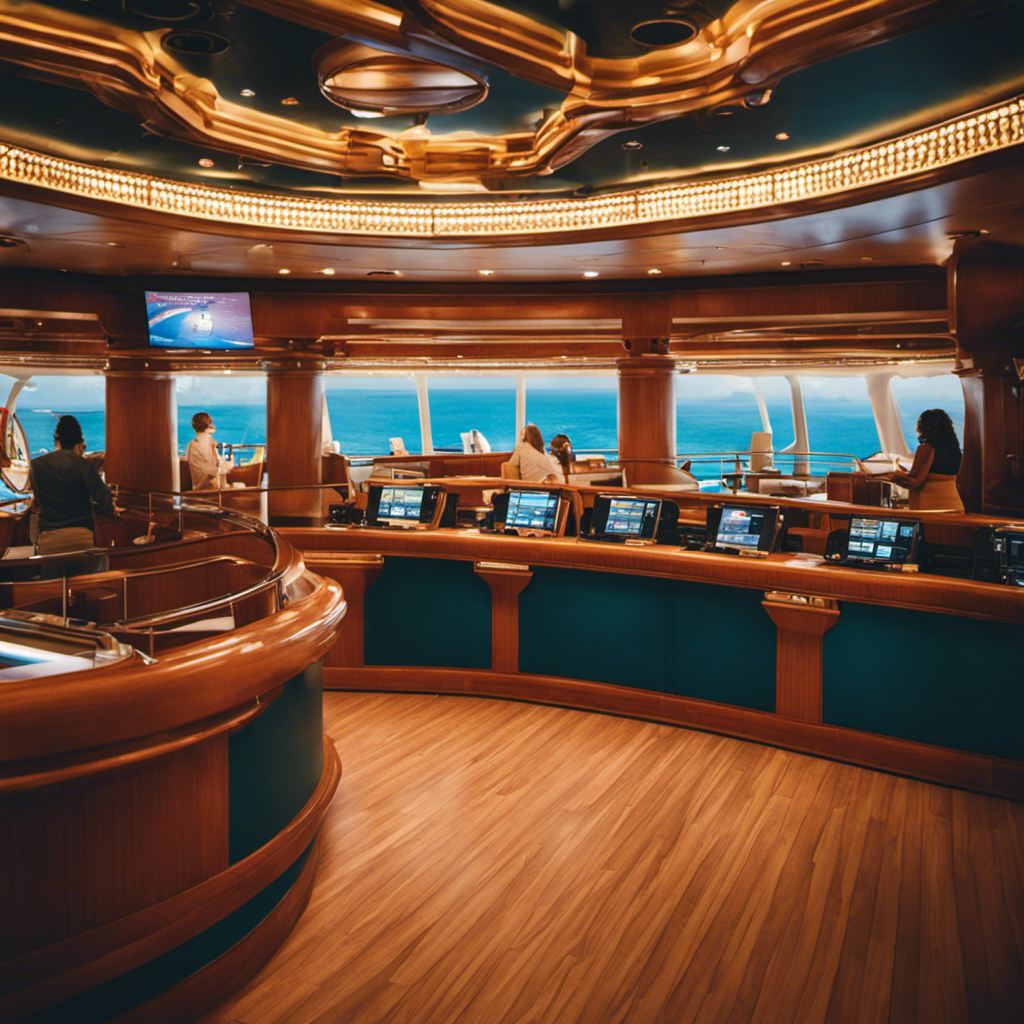
 Cruise FAQs3 months ago
Cruise FAQs3 months agoHow to Contact Someone on a Carnival Cruise Ship
-
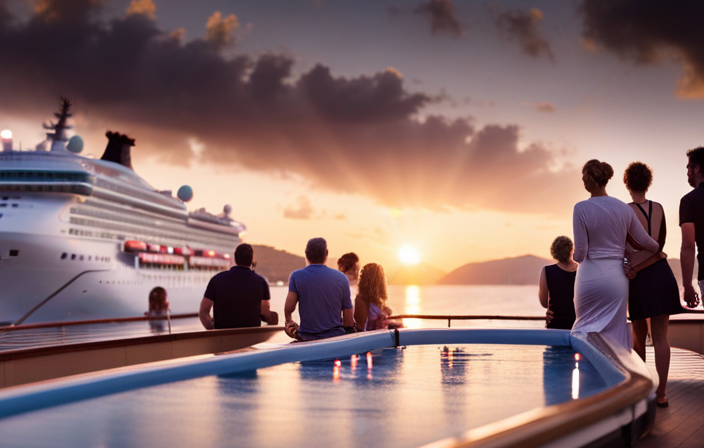
 Cruise Lines3 months ago
Cruise Lines3 months agoWhat Is The Average Age Of Passengers By Cruise Line
-

 Onboard Experience1 week ago
Onboard Experience1 week agoFinding Deals On Unsold Cruise Cabins: Tips And Strategies
-

 Cruise Lines3 months ago
Cruise Lines3 months agoDecoding Norwegian Cruise Line’s Gratuities and Service Charges
-
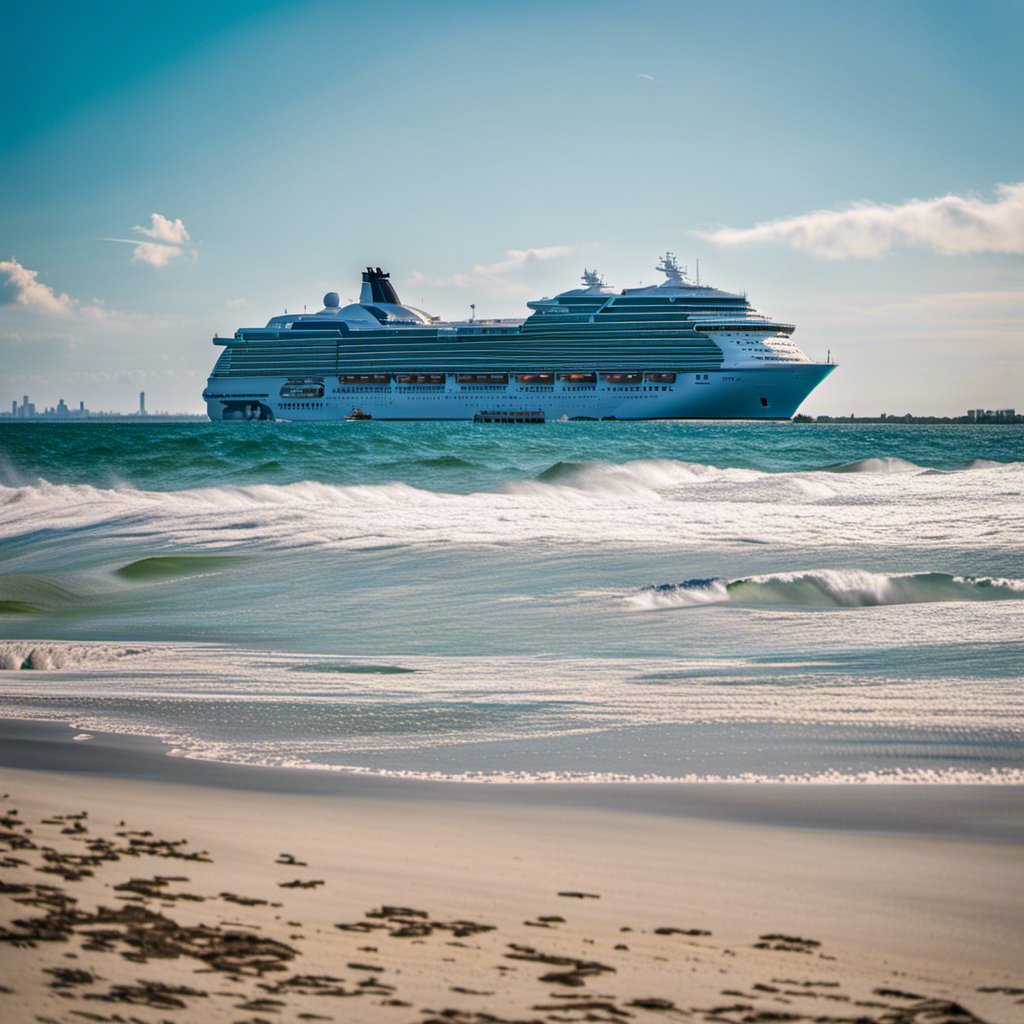
 Cruise Lines3 months ago
Cruise Lines3 months agoWhat Cruise Lines Depart From North Carolina








